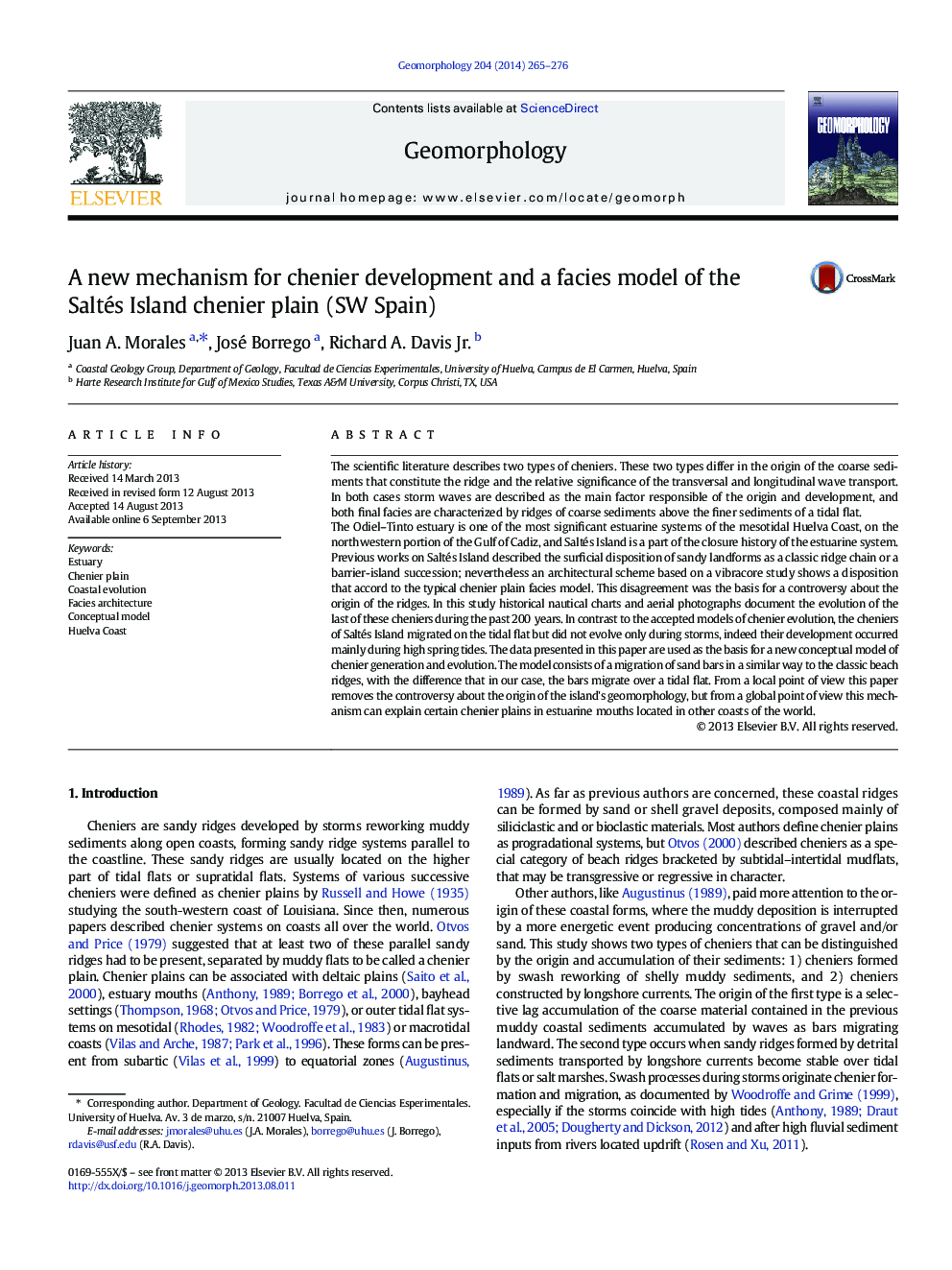| کد مقاله | کد نشریه | سال انتشار | مقاله انگلیسی | نسخه تمام متن |
|---|---|---|---|---|
| 6432730 | 1635445 | 2014 | 12 صفحه PDF | دانلود رایگان |

- A new mechanism for chenier development is described and documented.
- Cheniers migrate above previous tidal flats like normal swash bars.
- Developed on mesotidal coasts protected from direct wave action by tidal deltas
- Large-scale erosional processes are absent.
- Facies model similar to those resulting from other previously described mechanisms
The scientific literature describes two types of cheniers. These two types differ in the origin of the coarse sediments that constitute the ridge and the relative significance of the transversal and longitudinal wave transport. In both cases storm waves are described as the main factor responsible of the origin and development, and both final facies are characterized by ridges of coarse sediments above the finer sediments of a tidal flat.The Odiel-Tinto estuary is one of the most significant estuarine systems of the mesotidal Huelva Coast, on the northwestern portion of the Gulf of Cadiz, and Saltés Island is a part of the closure history of the estuarine system. Previous works on Saltés Island described the surficial disposition of sandy landforms as a classic ridge chain or a barrier-island succession; nevertheless an architectural scheme based on a vibracore study shows a disposition that accord to the typical chenier plain facies model. This disagreement was the basis for a controversy about the origin of the ridges. In this study historical nautical charts and aerial photographs document the evolution of the last of these cheniers during the past 200Â years. In contrast to the accepted models of chenier evolution, the cheniers of Saltés Island migrated on the tidal flat but did not evolve only during storms, indeed their development occurred mainly during high spring tides. The data presented in this paper are used as the basis for a new conceptual model of chenier generation and evolution. The model consists of a migration of sand bars in a similar way to the classic beach ridges, with the difference that in our case, the bars migrate over a tidal flat. From a local point of view this paper removes the controversy about the origin of the island's geomorphology, but from a global point of view this mechanism can explain certain chenier plains in estuarine mouths located in other coasts of the world.
Journal: Geomorphology - Volume 204, 1 January 2014, Pages 265-276